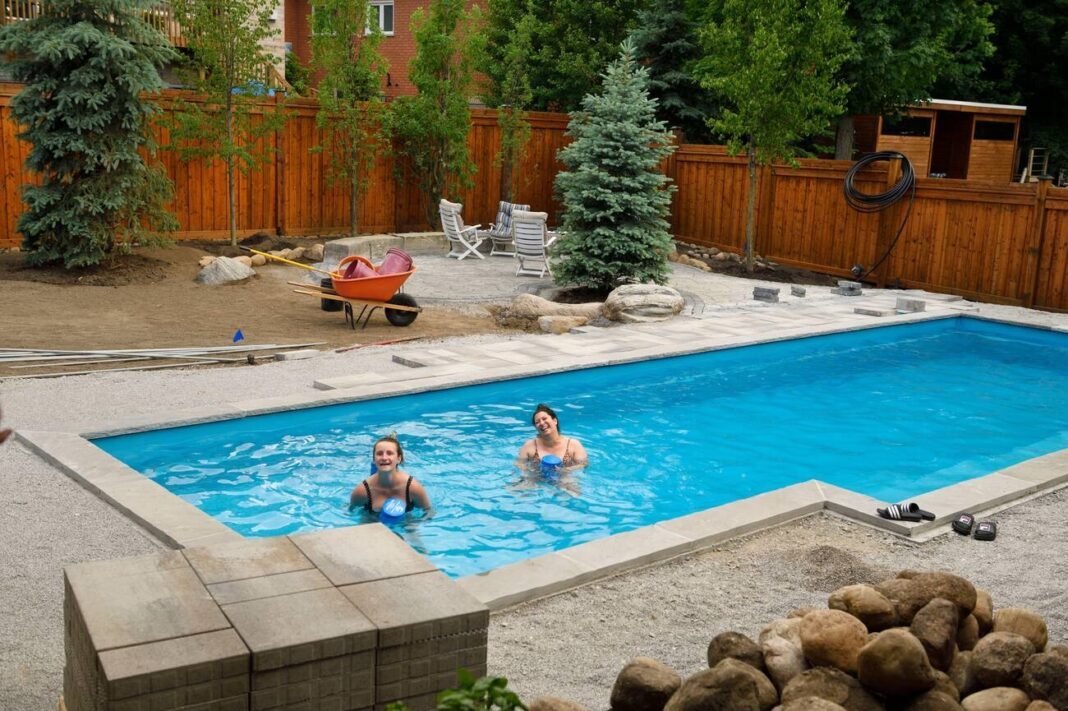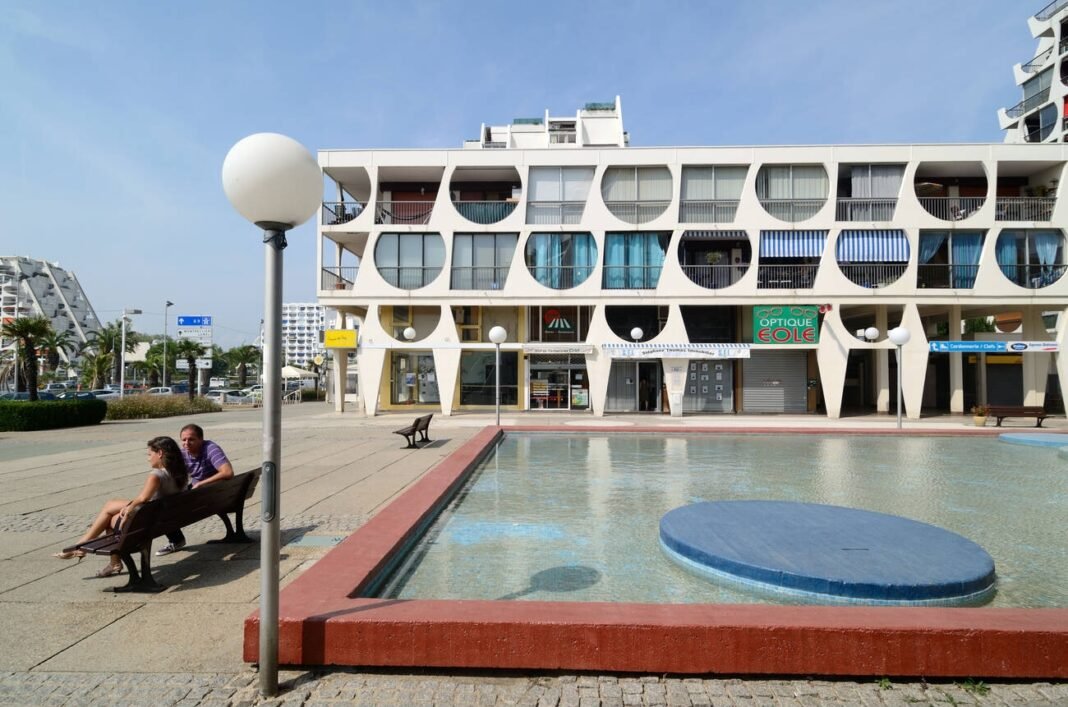The evolving dynamics of remote work and shifting consumer preferences have catalyzed a surge in demand for private oases, making new pool construction a sought-after addition to homes in 2024. With the average cost to build a pool standing at $40,855, and options ranging from above-ground to inground pools, homeowners are encouraged to consider climate impacts and local zoning regulations to ensure their swimming pool meets their dream specifications.
This article will delve into the essentials of custom pool building, from selecting the right materials and finishes to understanding the intricacies of pool installation and maintenance. As the pool and hot tub industry continues to expand, guided insights on every aspect of pool services and construction will equip readers with the knowledge needed to navigate the choices and costs involved in bringing their ideal swimming pool to life.
Designing Your Dream Pool
When embarking on new pool construction, the design phase is crucial in transforming your backyard into a personal retreat. Start by evaluating your yard’s dimensions to determine the optimal size and shape for your pool. Consider the sunlight exposure and soil conditions, as these will influence both the construction process and your pool’s longevity.
Explore Cutting-Edge Designs
2024 brings innovative trends like infinity edges and eco-friendly natural pools. These options not only enhance the aesthetic appeal but also offer sustainability benefits.
Personalize Your Pool Experience
Reflect your lifestyle by incorporating features that cater to your preferences. Whether it’s lush plantings, strategic outdoor lighting, or other landscaping elements, each addition should complement your custom pool and elevate the overall ambiance of your outdoor area.
Utilize Design Tools
Leverage online pool design tools to experiment with different shapes, sizes, and features. These platforms allow you to visualize potential designs in your actual backyard space, making it easier to decide on the perfect pool for your home.
Consult with Professionals
Seeking the expertise of a professional pool designer can be invaluable. They can offer insights into the latest trends and technologies, such as smart pool technology for enhanced convenience and safety, or eco-friendly systems like solar heating and saltwater treatments.
Consider Additional Features
Think about integrating elements that combine function with entertainment, such as underwater lighting for ambiance, built-in sound systems, or even outdoor projection screens for poolside movie nights. Each feature should be chosen to suit your entertainment needs and enhance your pool experience.
By following these steps and considering the latest trends and technologies, you can ensure that your new pool not only meets but exceeds your expectations, providing a perfect oasis for relaxation and entertainment.
Choosing the Right Materials and Features
Establish Your Budget and Material Choices
- Determine Your Financial Limits: Establish a budget considering the size, materials, and design complexities of your new pool. This financial plan will guide your choices and help manage overall expenses effectively.
- Select Appropriate Materials: Choose from materials like concrete, fiberglass, vinyl, and gunite, each offering different benefits in terms of durability, maintenance, and aesthetics. Concrete pools are versatile and durable, fiberglass offers quick installation and minimal maintenance, vinyl is cost-effective and customizable, and gunite provides longevity and a customizable structure.
Consider Long-Term Costs and Enhancements
- Plan for Future Expenses: Account for landscaping, ongoing maintenance, and potential upgrades. Understanding these costs upfront will help in making informed decisions that align with your long-term enjoyment and budget.
- Enhance Your Pool Area: Integrate features such as fire pits, outdoor kitchens, and advanced lighting and sound systems. These additions not only improve functionality but also enhance the aesthetic appeal of your pool area.
Material Specifics and Installation Insights
- Detailed Material Choices:
- Concrete: Costs between $35,000 and $65,000, offers high durability and the flexibility to form various shapes.
- Fiberglass: Generally ranges from $20,000 to $65,000, known for its ease of installation and resistance to algae.
- Vinyl: An economical option at $20,000 to $40,000, with ease of installation and a smooth finish.
- Installation Duration: The installation phase can vary, with gunite pools taking longer due to their complexity, while fiberglass and vinyl pools offer quicker setup times.
Custom Features and Their Impact on Cost
- Add Custom Features: Consider adding luxury features such as underwater lighting, built-in sound systems, or even a poolside projection screen. Each feature should align with your entertainment needs and can significantly impact the overall cost.
- Cost of Additional Features: Incorporating high-end features and sophisticated design elements like infinity edges can greatly increase the budget. For instance, an infinity pool can range from $55,000 to $130,000.
By carefully selecting materials and features that align with both your budget and lifestyle needs, you can create a durable and enjoyable swimming pool that complements your home and enhances your outdoor living space.
Understanding the Construction Process
Week-by-Week Breakdown of the New Pool Construction Process
Week 2-3: Groundwork
- Excavation and Permit Acquisition: The initial phase involves excavating your backyard to the required specifications and securing necessary building permits.
Week 3: Installation Kickoff
- Transforming Your Backyard: Installation begins, marking a significant transformation of your outdoor space.
Week 4: Infrastructure Setup
- Electrical, Plumbing, and Main Drain Installation: Essential services are installed which are crucial for the functionality of the pool.
Week 5: Foundation Development
- Concrete Foundation Formation: The concrete foundation, which supports the entire structure of the pool, is laid down.
Week 6: Adding Aesthetic Elements
- Bringing Design to Life: Decorative elements are added, enhancing the visual appeal of your pool.
Week 7: Interior Work
- Interior Finishing Touches: Focus shifts to the interior, adding finishing touches to the pool’s surface.
Week 8: Functionality Testing
- Technical Testing for Flawless Functionality: Comprehensive testing ensures all systems operate correctly.
Week 9: Final Touches
- Final Interior Paint Application: The pool receives its final coat of paint, preparing it for water filling.
Week 10: Landscaping
- Transforming the Surrounding Area: Landscaping is done to integrate the new pool with the surrounding environment.
Key Considerations During New Pool Construction
- Duration and Patience: The entire process can take several months, requiring patience from homeowners.
- Post-Construction Care: A 28-day startup procedure follows filling the pool, crucial for the longevity of the pool plaster.
- Maintenance: Regular maintenance includes testing water chemistry and adjusting as necessary to maintain balance.
By understanding each phase and what it entails, homeowners can better prepare for the journey of new pool construction, ensuring a smooth process and a quality outcome.
Maintenance and Upkeep Post-Construction
Regular Maintenance Schedule
Daily and Weekly Tasks
- Daily Checks: Skim debris from the water surface, check water levels, and monitor pH levels to ensure they remain within the recommended range.
- Weekly Oversight: Test water chemistry, vacuum the pool floor, and clean filters to maintain clear and healthy water. Shock the pool as needed, especially after heavy use.
Monthly and Annual Responsibilities
- Monthly Inspections: Examine pool equipment for signs of wear or damage. Replace parts as necessary to avoid breakdowns.
- Annual Maintenance: Include tasks like deep cleaning, checking for leaks, and preparing the pool for seasonal changes. Resurfacing or tile replacement may be required periodically to maintain the pool’s integrity and appearance.
Cost Considerations for Pool Upkeep
- Annual Expenses: Maintenance costs can range between $1,000 and $4,000, influenced by pool size, location, and frequency of use.
- Long-Term Savings: Regular upkeep helps avoid costly repairs and extends the lifespan of pool equipment.
Advanced Pool Care Techniques
- Digital Tools: Utilize digital water testing kits for accurate chemical balance assessments. Regularly update your methods in line with evolving pool care technologies.
- Salt Level Management: For saltwater pools, maintain the recommended salt levels to ensure optimal function and water quality.
Safety and Enhancement Features
- Lighting and Heating: Install energy-efficient LED lights and consider heating options like solar heaters to extend the swimming season.
- Water Features and Safety: Add aesthetic features such as waterfalls and ensure safety with fences or pool covers to prevent accidents.
By adhering to a structured maintenance schedule and embracing modern pool care solutions, homeowners can enjoy a pristine and safe swimming environment year-round. Regular maintenance not only preserves the pool’s condition but also enhances the overall enjoyment and safety of the swimming experience.
Conclusion
Through exploring the multifaceted journey of new pool construction and upkeep, this article has illuminated the essential steps, considerations, and costs involved in creating and maintaining a personal oasis. From the initial designs, material selections, and installation processes to the critical importance of regular maintenance, homeowners have been provided with a comprehensive guide to navigate the complex but rewarding endeavor of bringing their dream pool to life. The emphasis on innovative trends, sustainability, and the integration of technology underscores the evolution and dynamic nature of residential pool projects, ensuring not just a luxurious addition but an eco-friendly and efficient aquatic space.
As we move forward, the insights shared herein aim to empower readers with the confidence to make informed decisions that reflect both their lifestyle and budget. Recognizing the significance of such an investment, the article underscores the importance of thorough planning, professional guidance, and proactive care in ensuring long-lasting enjoyment and value. Whether the goal is to enhance outdoor living, boost property appeal, or simply create a haven for relaxation and recreation, the journey to successful pool ownership is a testament to thoughtful preparation and an appreciation for the finer details of home enhancement.
FAQs
What are the future prospects for the New pool construction market in 2024?
The New pool construction industry in the United States is expected to experience growth from 2024 to 2032, with a compound annual growth rate (CAGR) of 3.3%, as forecasted by EMR.com.
When is the most affordable time to build a pool?
Constructing a pool during the winter season can often be the most cost-effective option. This timing can also allow you to enjoy your new pool early if the spring season is warm.
Which part of pool construction typically incurs the highest cost?
The material chosen for the inground pool significantly influences the overall cost of construction. Vinyl-lined pools are generally the least expensive, concrete pools are the most costly, and fiberglass pools fall in between these two in terms of price.
How do people finance the construction of inground pools?
Individuals looking to finance the construction of an inground pool can consider unsecured personal loans or equity financing, which involves using the homeowner’s property as collateral. These options are among the common methods to afford the installation of an inground pool.


